One of the most unique places in the USA is barely in the states at all. Organ Pipe Cactus National Monument should be on every nature and hiking enthusiast’s list!
Organ Pipe Cactus is in Southern Arizona adjacent to the Mexican border and it has one of the most enthralling natural landscapes you’re likely to ever see.
What Makes Organ Pipe Cactus Unique?
Organ Pipe Cactus National Monument is named for the visually stunning Organ Pipe Cactus.
The Sonoran desert of Southern Arizona, where the park is located, is the only place in the USA where the cactus grows in the wild. The cacti have an out of this world appearance and the distinctive pipes can grow up to twenty feet tall.
The Pipe Cactus flowers bloom in May and June but the scalding summer heat makes the winter the best time to visit.
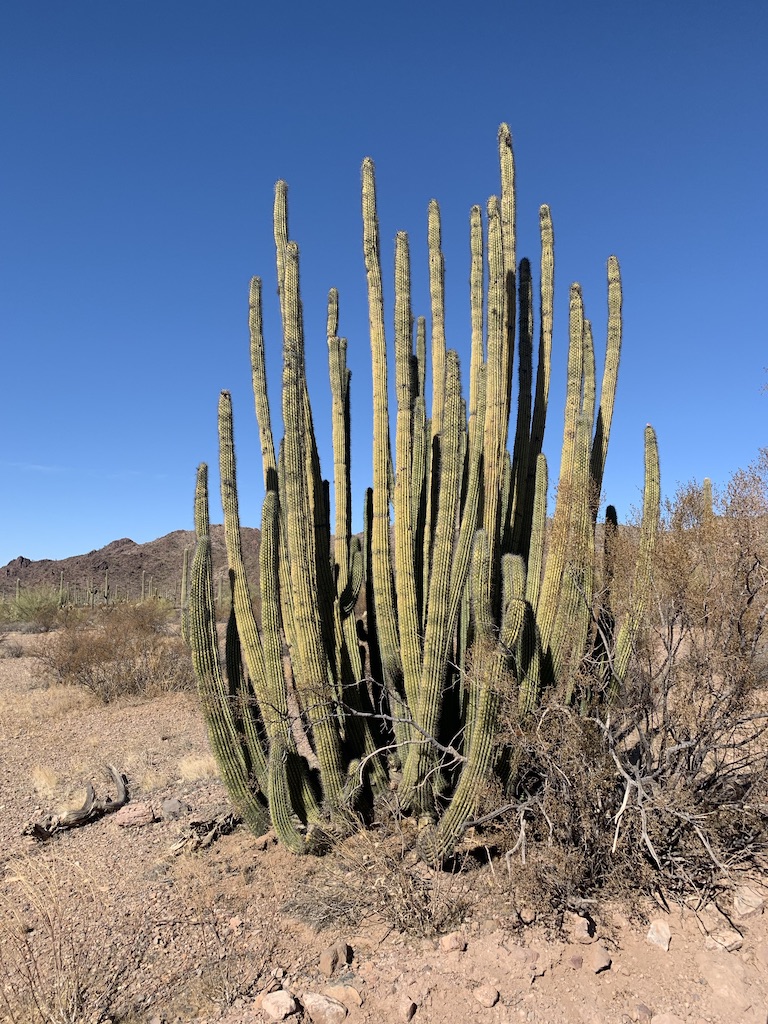
You’ll literally be able to see Mexico on your hikes and the monstrosity that is the border wall. Unfortunately, the wall’s construction went ahead despite warnings of the effects it would have on animal habitats/migrations. The park is well worth visiting, regardless.
Convenient to Major Cities
The closest town to Organ Pipe Cactus National Monument is Ajo, which is located about 15 miles north of the park. It’s worth a quick pit stop for its whitewashed Spanish colonial architecture and compact town center.
Both Phoenix and Tucson are just over two hours away from the National Monument, making the National Monument an easy stop on a winter road trip. Don’t forget that Tucson is home to Saguaro National Park as well!
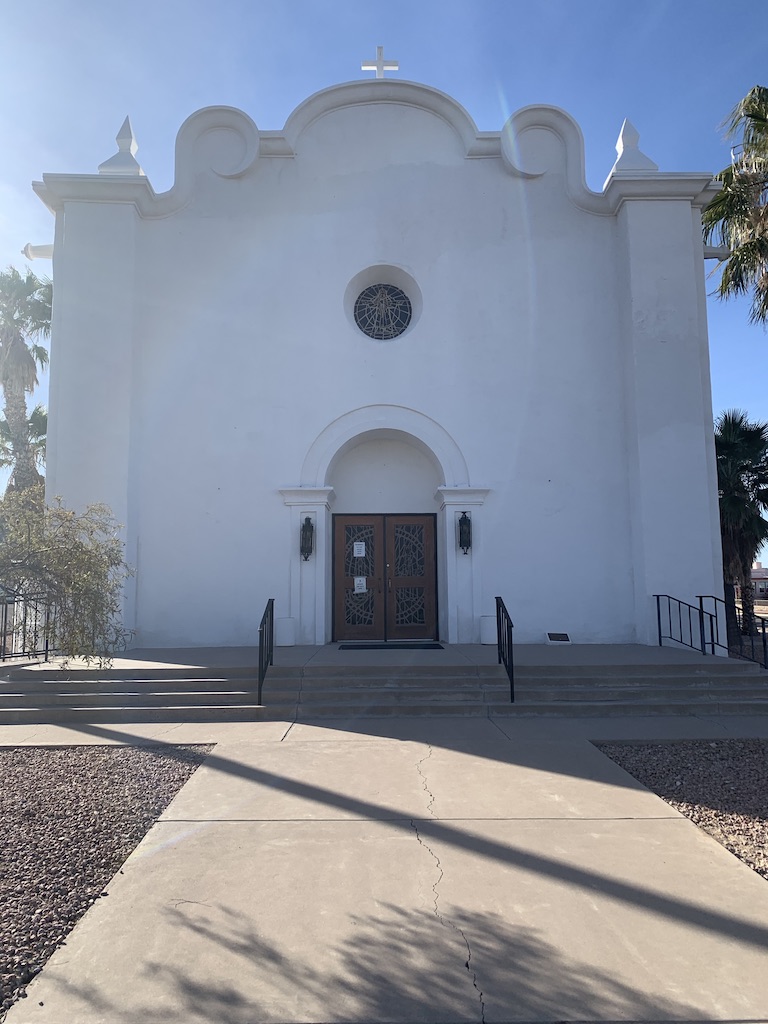
Even though it isn’t terribly far from a couple of big cities, the Monument has a very wild feeling to it. Many parts of the park appear untouched and you certainly won’t find crowds on some of the best hikes there.
Recommended Hikes at Organ Pipe Cactus NM
Easy:
Desert View Trail
The Desert View Trail is accessible from the Twin Peaks Campground and is best for families and viewing the sunset. It’s a quick mile and a half loop that gives an overview of what’s on offer at the park. I’d recommend doing this hike first just to get a sense of the landscape and seeing some Organ Pipe Cacti up close.
If I remember correctly, this is also the trail where you’ll be able to see Mexico most clearly.
Victoria Mine Trail
This 5 mile loop trail leads to an abandoned mining operation from the 1800s. It’s relatively flat, so anyone can do it.
It’s worth it to see the remains of an abandoned stone cottage at the end.
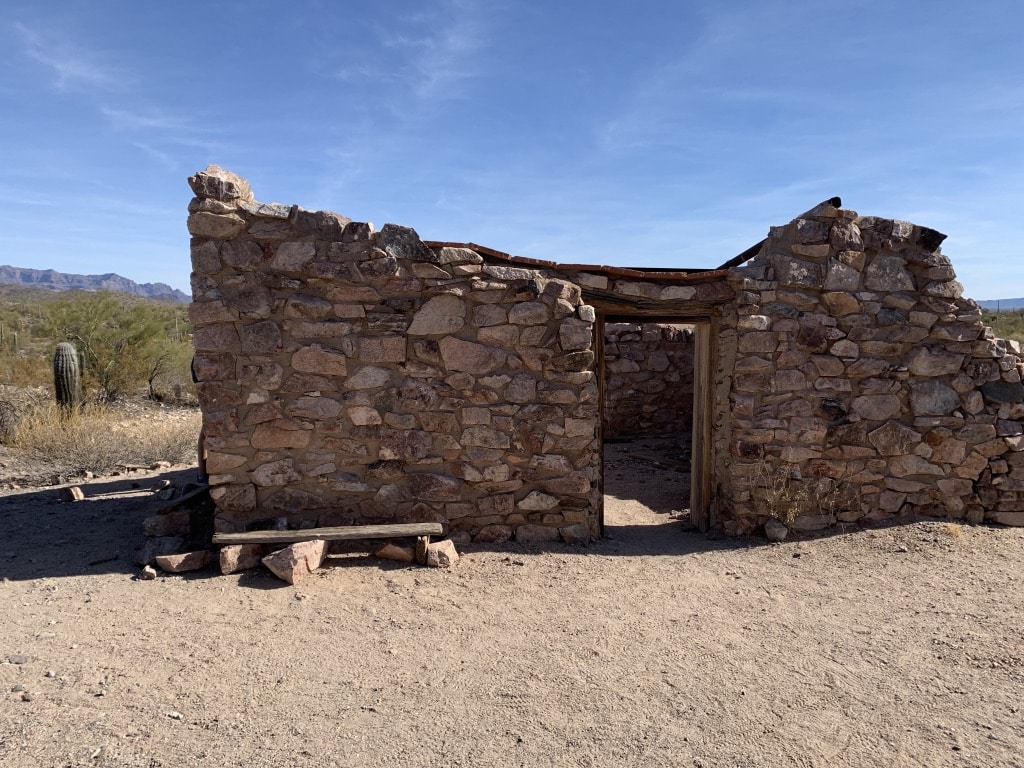
This trail also had the wackiest looking Saguaro I’ve ever seen:
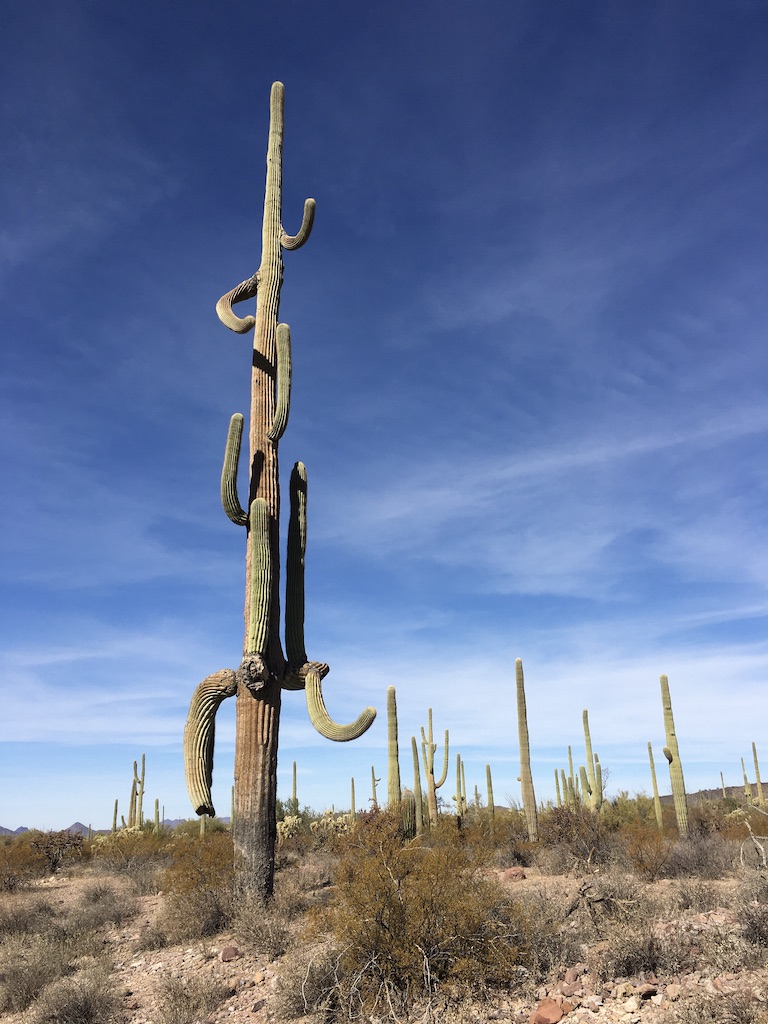
Moderate/Hard:
Estes Canyon/Bull Pasture – These trails can be done as a combined four mile loop and it was my favorite hike in the park. I like my hikes to be strenuous and this one offers a nice balance between being challenging and rewarding.
Once up at the Bull Pasture viewpoint, you’ll have unobstructed views of Mount Ajo, the tallest peak in the park.
It’s unmarked at certain points, which means I’d strongly recommend downloading maps before taking it on. It’s also pretty steep. For those who try to complete it, the views at the end make it more than worthwhile.
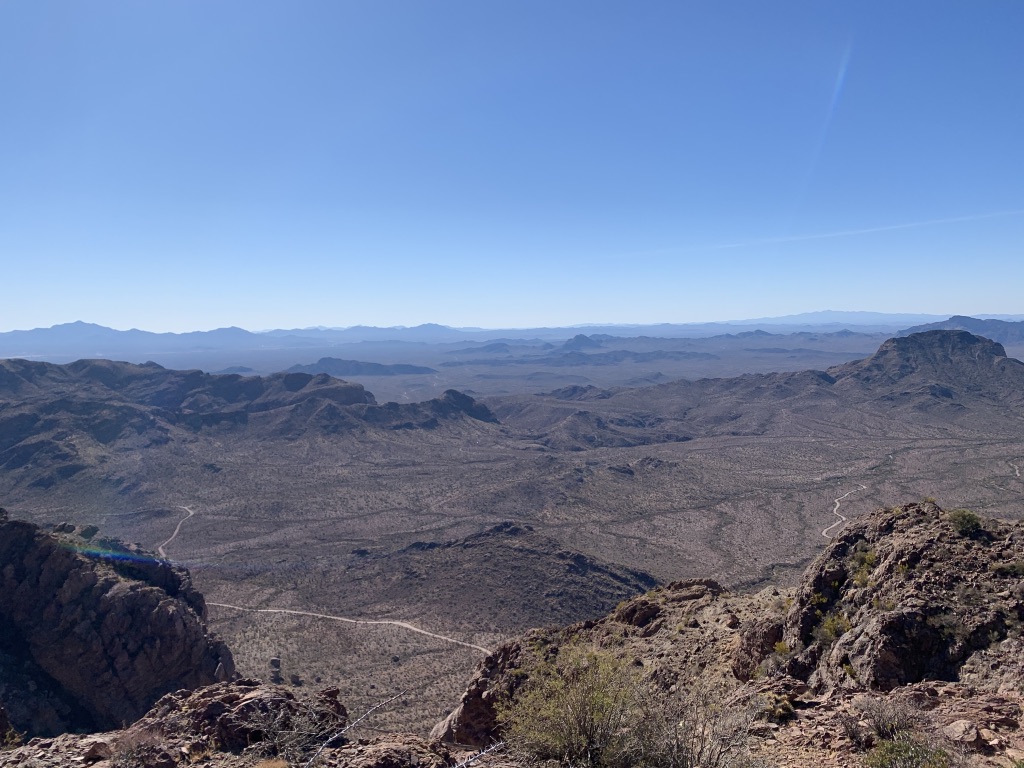
Arch Canyon – Arch Canyon is another satisfyingly challenging hike. The first half mile and change is simple enough and relatively flat. The next half mile is incredibly steep and probably best for more experienced hikers.
At the summit, you’ll be able to see some mountain peaks and the arch that’s the namesake of the trail. I did this hike for sunset and definitely don’t regret it.
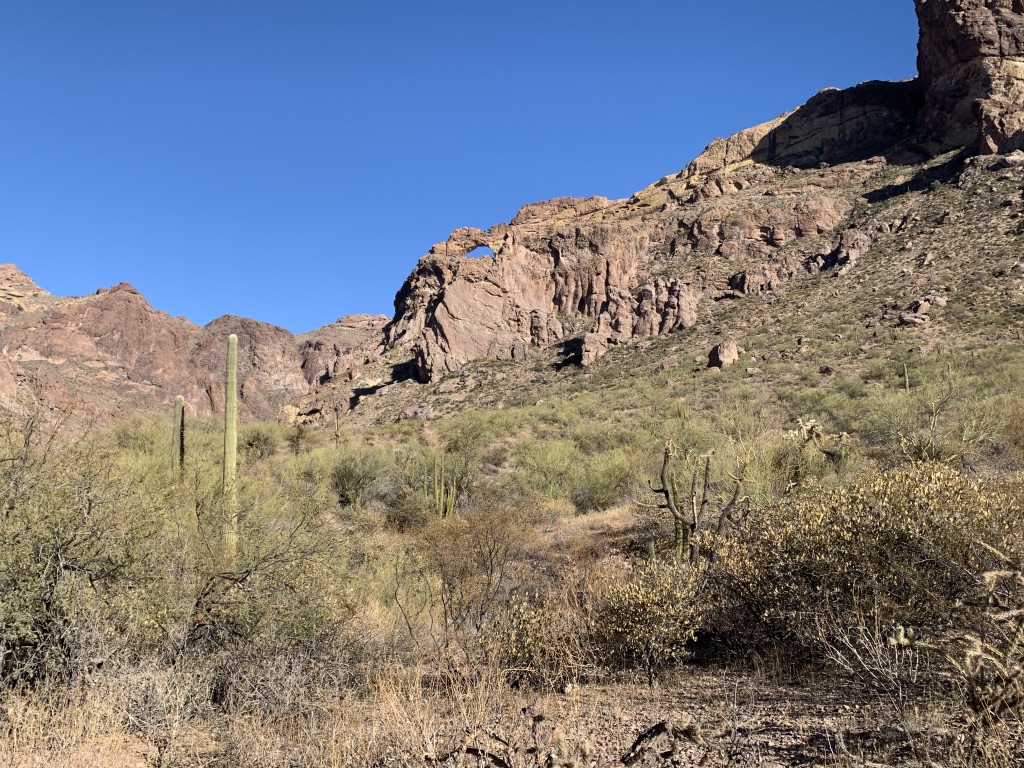
Scenic Drive
The Ajo Mountain Loop is a mostly dirt road that is the most popular drive in the Monument. We were able to take our rented campervan on it without issues and I’d highly recommend spending at least a full day on it.
Some of the best hikes in the park are along the loop like Estes Canyon/Bull Pasture and Arch Canyon. Because it’s a one way road, it’s best to soak things in because getting back to the same spot is a nuisance on the 21-mile loop.
Camping
There are two traditional campgrounds at Organ Pipe Cactus. The Twin Peaks Campground is a large campground can accommodate RVs and the cost is $20 per night. For a more primitive experience, check out Alamo Campground, which is $12 and tent-only.
However, the best camping experience is roughing it in the backcountry. A backcountry permit is only $5 per zone and lets you sleep among the famed Organ Pipe Cacti.
That’s assuming you’ve already paid the $25 entrance fee, which is of course free with the $80 NPS Annual Pass. The pass is well worth it if you’re visiting more than 3 National Parks over the course of a year.
Because there are no major cities within a 100 mile radius, the backcountry at Organ Pipe Cactus is an excellent place to stargaze and get some solitude. The only noise likely to wake you up is a Border Patrol car…
A Quick Note
This area of southern Arizona is apparently a large focus for border patrol. So, you might see some seemingly alarmist signs like these:
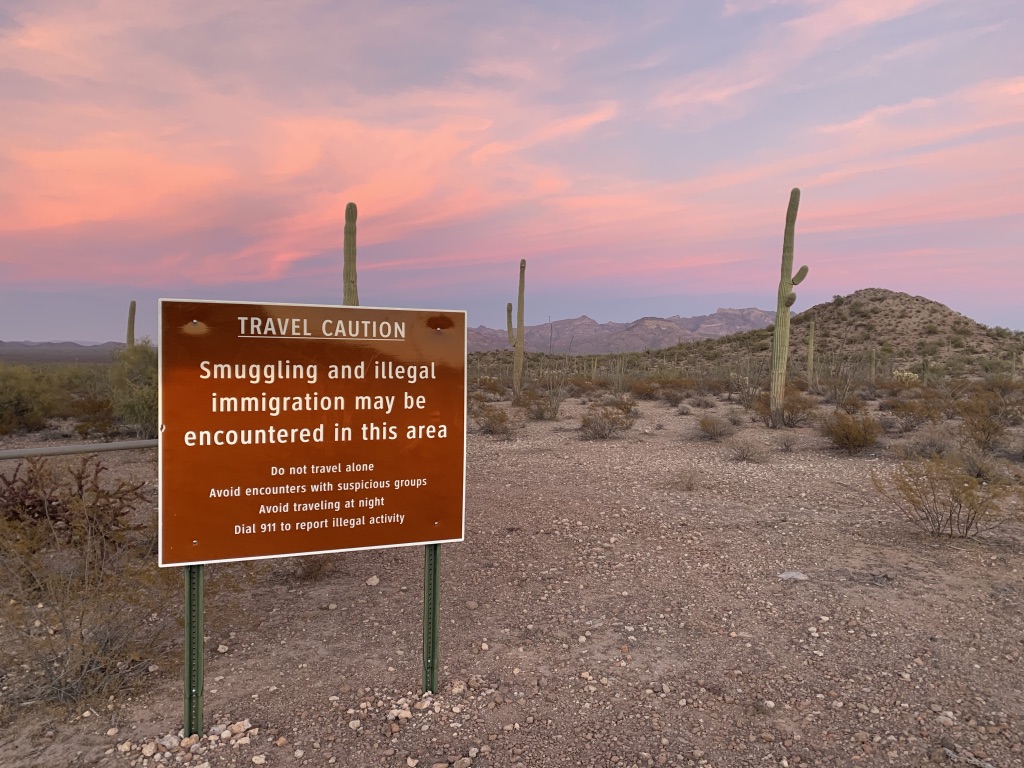
Recent policies have impacted the park, including the Trump administration’s decision to construct the border wall. When I was there last January, one of the roads in the park was closed off to traffic because of construction. A lot of cacti were razed and animal habitats were unfortunately impacted.
You almost certainly won’t see any migrants coming through but I’d be shocked if you didn’t see border patrol cars. They’re omnipresent in the area, especially after sundown. You’ll most likely go through a border patrol checkpoint before you even get to the park, because they’re all over Southern Arizona.
Road Trip Suggestions
Interestingly enough, Organ Pipe Cactus National Monument holds the distinction of being the place in Arizona that’s closest to a beach. At just over an hour away, Mexico’s Puerto Peñasco is an option, but I’ve never personally been there.
One place I’d highly recommend is Tucson. It was the first US city to be named a capital of gastronomy by UNESCO and has some of the best Mexican food in the country. It’s also home to Saguaro National Park and is worth spending at least a couple of nights in.
A North-South Arizona road trip is one idea, with Grand Canyon National Park as the northern terminus and OPCNM in the south. There are lots of potential stops on the way like Wupatki National Monument, Sunset Crater NM, Walnut Canyon NM, Sedona and the Coconino National Forest, Montezuma Castle NM and the Phoenix area.
Both Joshua Tree to the West and Chiricahua National Monument to the East are around four to four and a half hours away.
